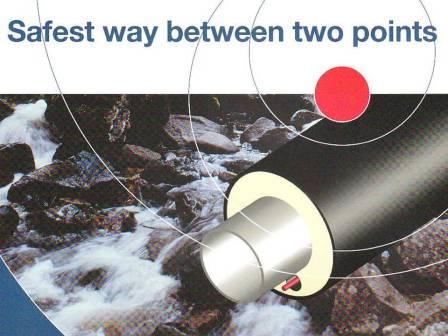The Logstor/AVA SafePipe System - a new generation "Smart-Pipe"
The Logstor/AVA SafePipe System – a new generation of pipe-in-pipe, «smart-pipe», is developed in a collaboration setup between AVA Systems and Kingspan/Logstor. A Logstor/AVA SafePipe is a pipe system that monitors itself, and will report if a leak inside the pipe should occur. This development is driven by several reasons. Number one is consequences of leaks from a pipeline.
Pipeline leaks can have severe consequences on the environment, public health, and the economy. Environmental impacts include soil and water contamination, damage to ecosystems, and harm to wildlife. Additionally, leaks can result in the release of hazardous substances, posing health risks to nearby communities. Economically, pipeline leaks lead to significant financial losses due to product waste, repairs, and cleanup efforts. Moreover, leaks can damage a company’s reputation and result in legal liabilities and regulatory penalties.
The Logstor/AVA SafePipe System, is the result of a smart combination of two technologies. From LOGSTOR comes production technology of dual-wall or «pipe-in-pipe» construction in high volumes where experience and knowledge lies in decades of production of pre insulated dual wall pipes for district heating. From Raychem, which is now part of nVent, comes the TraceTek leak detection and location technology. TraceTek is an advanced symmetrical dual circuit sensor technology developed for the detection of small leaks through the smart application of semiconducting plastic polymers with special electrical and chemical properties. An advanced combination of chemistry and electronics is used for leak detection of various fuels. Most fuels based on oil (liquid hydrocarbons) are non-conductive. Therefore, commonly available low-cost techniques based on electrical conductivity in liquids (such as water) do not work.

The technology developed by LOGSTOR for the volume production of double-walled pre-insulated pipes for liquid-based district heating (or cooling) distribution makes it possible to produce cost-effective double-walled pipes where an integrated perforated guide pipe is placed at 6 o’clock in the space filled with PUR between the inner pipe (media pipe) and the outer tube (outer jacket). The special TraceTek sensor cable with installation and commissioning procedures developed by AVA SYSTEMS is then installed inside this perforated traction pipe. The sensor cable registers and reports leaks that may occur throughout the life of the pipe, regardless of where in the pipe the leak may start. The Logstor/AVA SafePipe System product achieves in this way a form of »intelligence», through a continuous 24/7 monitoring of the pipe from its inside, uninterrupted and throughout the entire length of the pipe. Because the outer sheath of SafePipe is produced in solid HDPE (High Density Poly Ethylene) material, the outer sheath of the pipe function in this context as an «environmental membrane». A potential leak will therefore be detected and notified already in its very initial phase, while it is still insignificant and is still kept inside the partition, ie inside the environmental membrane and therefore inside the pipe system. Consequently, the actual contents (chemical / fuel, etc.) that the transport pipe carries will never escape out to the surroundings of the pipe before maintenance or repair can be carried out as a normal job assignment. This way the pipe is surveilled and secured for leaks originated from the oil product transported by the inner pipe.
We have in addition integrated surveillance of potential damages to the outer jacket, or the environmental membrane if you like. A damage caused by for instance other construction work or caused by whatever the reason is represents a danger for corrosion of the inner pipe. CUI, or Corrosion Under Insulation, is a well-known and a tricky phenomenon to deal with. The Logstor/AVA SafePipe System has, however, solved this by integrating a separate loop of copper wire in the PUR layer. This way we can measure whether or not there is an occurrence of moist or water inside this layer by looking at the conductivity between this circuit and the carriage pipe in the center. This gives us the possibility to produce an answer to an essential question; Is the outer jacket pipe sealed and therefore securing the pipe with an hermetic membrane to the environment or is there a damage that might allow surrounding air and water to penetrate into the construction and therefore represent a threat with respect to corrosion? Using a reflectometer based technology we are then enabling us to pinpoint such a damage. A more traditional and widely used approach, based on cathodic protection has limited capabilities to pinpoint problem areas in a similar way.
